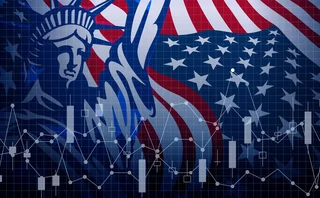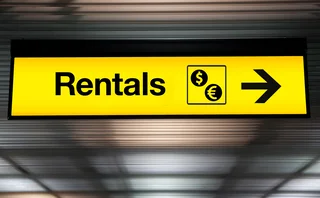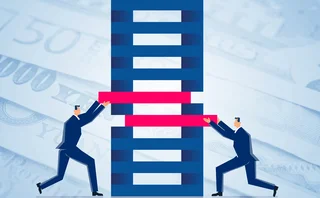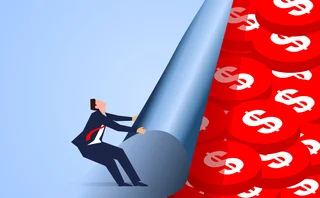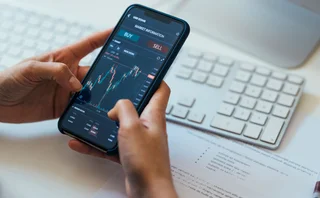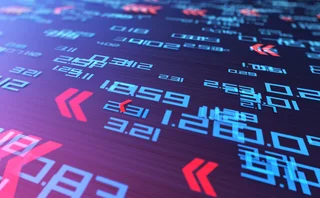
FX options: the race to electronification has only just begun
Could years of entrenched voice trading in FX options be about to end as electronification gathers pace?
When it comes to electronification, the foreign exchange options market has historically been playing catch-up with other over-the-counter instruments. Structural impediments combined with a general preference for voice trading on the part of market participants played a big role in delaying the inevitable. But, although it might have taken longer than expected, change is coming.
For this month’s cover story, FX Markets spoke to eight banks, four trading venues and one broker, and the overall feedback is that electronic trading in OTC FX options is slowly advancing. The banks polled report the percentage of options traded electronically is between 66-90% – although, it has to be noted, this only represents between 10-40% of total traded volume.
Still, the market trajectory is clear.
What’s happening in the FX options space is part of a wider trend of electronification that swept through the spot market over a decade ago. In recent years, it caught up with the swaps and forwards market before moving on to non-deliverable forwards.
Historically, the interdealer market has led the charge for these types of structural moves. This time, the change is coming from the dealer-to-client space. Banks are racing to devise ways to improve the experience of electronic trading for their FX options clients. Some of the major dealers – Crédit Agricole, Goldman Sachs, HSBC and UBS, to name a few – are adding all kinds of bells and whistles to their own trading platforms to encourage wider adoption of electronic execution and risk management tools aimed at reducing operational errors.
The response from clients has been cautious but positive, with dealers reporting a shift in their preferences in favour of electronic execution. For now, this mostly involves smaller tickets, while larger ones are still subject to traditional voice brokerage. But this has already translated into a significant growth in the average trade size, from around $5-20 million only a few years ago to $50-200 million today.
As we have previously explored, increased automation in the market is calling into question many historic trading roles. Salespeople and voice traders, for instance, have been the life and soul of the FX market since its inception. But if they wish to survive as the world around them changes, they will need to adapt.
Perhaps more importantly, as this corner of the market continues to grow in the coming years, the focus will soon shift to the race between single- and multi-dealer platforms to secure the extra clients’ flow.
The latter promises to offer the best option – no pun intended – to prove best execution as prescribed by Mifid II. The former pledges to use years of electronification experience in spot, swaps and non-deliverable forwards markets to replicate the same achievements in the options space. No one knows where clients’ preferences will land, or which execution platforms will prevail. But one thing is certain: the race to secure a slice of this market is on.
Only users who have a paid subscription or are part of a corporate subscription are able to print or copy content.
To access these options, along with all other subscription benefits, please contact customer services - www.fx-markets.com/static/contact-us, or view our subscription options here: https://subscriptions.fx-markets.com/subscribe
You are currently unable to print this content. Please contact customer services - www.fx-markets.com/static/contact-us to find out more.
You are currently unable to copy this content. Please contact info@fx-markets.com to find out more.
Copyright Infopro Digital Limited. All rights reserved.
As outlined in our terms and conditions, https://www.infopro-digital.com/terms-and-conditions/subscriptions/ (point 2.4), printing is limited to a single copy.
If you would like to purchase additional rights please email info@fx-markets.com
Copyright Infopro Digital Limited. All rights reserved.
You may share this content using our article tools. As outlined in our terms and conditions, https://www.infopro-digital.com/terms-and-conditions/subscriptions/ (clause 2.4), an Authorised User may only make one copy of the materials for their own personal use. You must also comply with the restrictions in clause 2.5.
If you would like to purchase additional rights please email info@fx-markets.com
More on Our take
FX traders revel in March Madness
Chaotic Trump policies finally bring diversity to flows – to the delight of market-makers
Could LPs explore renting out their client franchise?
Connecting regional banks with sophisticated clients may see dealers evolve to become liquidity distribution hubs
Higher rates see corporates reassess FX structured products
Treasurers are getting a taste for dual currency notes and structured forwards
Quants dive into FX fixing windows debate
Longer fixing windows benefit clients, but predicting how dealers will respond is tough
Low FX vol regime fuels exotics expansion
Interest is growing in the products as a way to squeeze juice out of a flat market
BofA quants propose new model for when to hold, when to sell
Closed-form formula helps market-makers optimise exit strategies
FX forwards dealers face added challenges in P&L analysis
Mark-out tools for forwards and swaps trading may not be a panacea
What T+1 risk? Dealers shake off FX concerns
Predictions of increased settlement risk and later-in-the-day trading have yet to materialise

